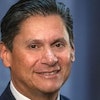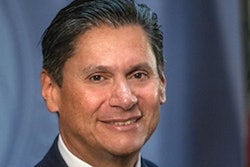A proposed federal financial aid policy could change the lives of postsecondary students, particularly Black and Latinx students, by allowing them to spend less out-of-pocket for their degrees and prevent the accumulation of student debt, which remains financially crippling for many graduates.
That's the findings from a new report, released by researchers at the Higher Education, Race, and the Economy (HERE) Lab at the University of California, Merced, in cooperation with The Institute for College Access and Success (TICAS). Their research supports the creation of a wealth-based Pell Grant to supplement the traditional Pell Grant, which offers financial support to students from low-income backgrounds.
 Dr. Christian Michael Smith, assistant professor of higher education in the Louise McBee Institute of Higher Education at the University of Georgia and researcher with the HERE Lab.
Dr. Christian Michael Smith, assistant professor of higher education in the Louise McBee Institute of Higher Education at the University of Georgia and researcher with the HERE Lab.
“To me, that says that income is running the show when it comes to Pell Grant eligibility, and wealth is in the passenger seat,” said Dr. Christian Michael Smith, an assistant professor of higher education in the Louise McBee Institute of Higher Education at the University of Georgia and a researcher with the HERE Lab.
“We have simulated what would happen if the asset information already collected in the FAFSA were utilized in a more fulsome way,” said Smith. “Without tinkering with the existing Pell Grant, leave it as it is, and on top, we supplement that financial aid with a wealth-based Pell for any students who are low-wealth enough to qualify, awarded exclusively based on asset information and not based on any of the income information.”
The report details just how much impact this could have on students, and just how many students could potentially benefit. If the FAFSA-reported wealth threshold was set at a low of $500, 2.8 million students would benefit, and the majority of those would be students of color. Almost 50% of Black FAFSA filers, around 40% of Latinx filers, and 20% of white filers come from both low-income and low-wealth backgrounds, what Smith calls being “doubly disadvantaged.”
“But in the eyes of the Pell Grant allocation formula, these ‘doubly disadvantaged’ students are not treated all that differently from students who only have the single disadvantage of low-income,” said Smith. “Students in the bottom quintile [of wealth] nearly double the amount borrowed by students from the highest wealth backgrounds.”
















